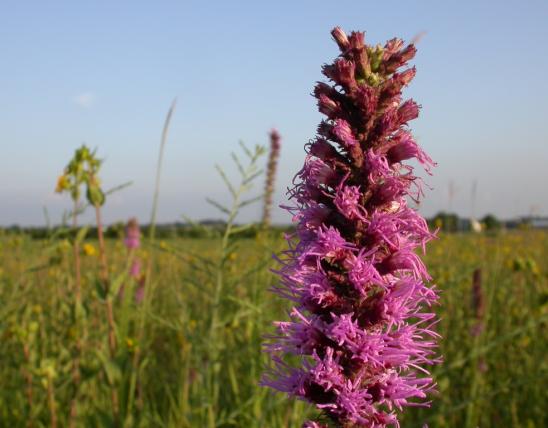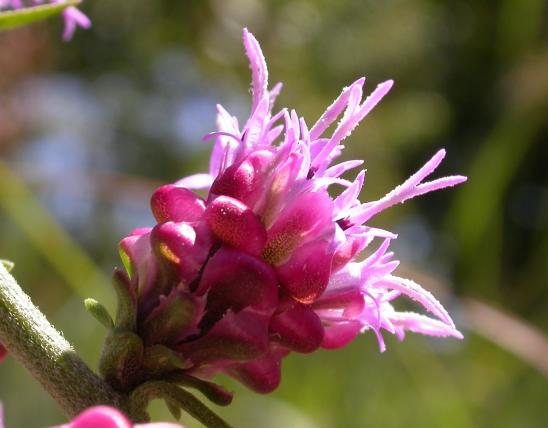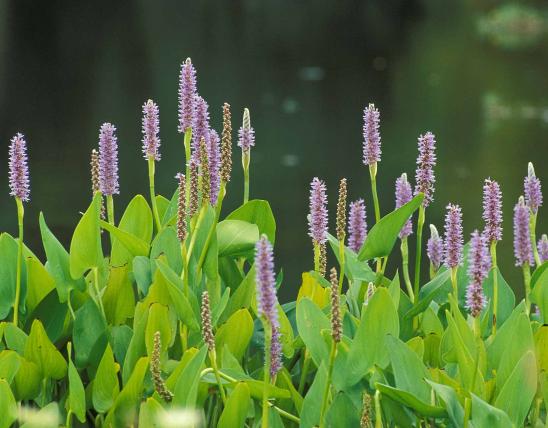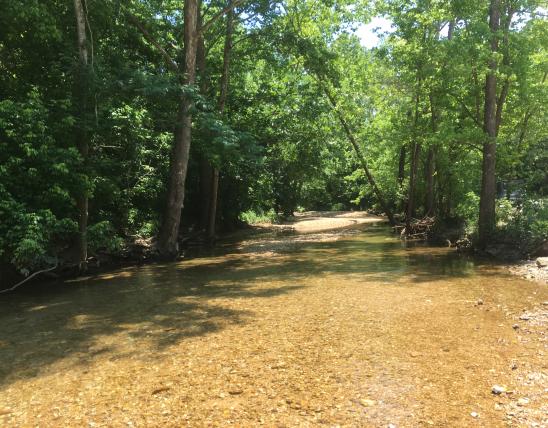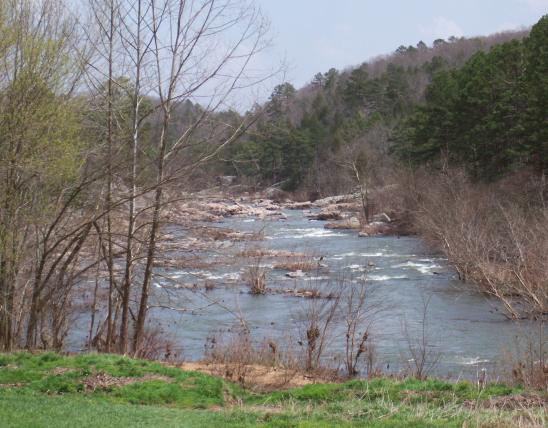
Prairie blazing star is a perennial native wildflower with a hairy, unbranched stalk and a spike of many densely crowded, rose-purple flowerheads. A signature wildflower of the tallgrass prairie, it is sometimes seen in the thousands. The rootstock is a globe-shaped corm.
The leaves are alternate, very numerous (sometimes so crowded as to appear whorled), narrow (linear), the lower ones to 16 inches long and about ½ inch wide, becoming much shorter and narrower higher up; the surfaces are hairless or with dense, short hairs; the basal and stem leaves have 3 or 5 main veins.
The flowerheads are stalkless and densely crowded around the upper portion of the spikelike stalk; rose-purple (occasionally white). The flowerheads have 4–9 disk florets and no petal-like ray florets. The styles (elongated pistil tips) are 2-branched, threadlike, and protrude far outside the 5-lobed petal tube. Blooms July–October.
The involucral bracts (overlapping leaflike structures at the base of each flowerhead) are lance-shaped, tapering to a sharp point that spreads or curls backward; mostly with thin, pale to transparent margins; the margins, or the entire bract, are sometimes strongly purplish-tinged.
Missouri’s populations of this species are variety pycnostachya. Another, hairier form, var. lasiophylla, occurs to our southwest (Texas through Louisiana).
Learn more about this and Missouri’s other blazing stars on their group page.
Similar species: There are 9 species of Liatris recorded for Missouri, and many of these have been known to hybridize where they occur in the same vicinity. To distinguish between the various species and hybrids, one should be prepared to note details of the flower structure, such as the involucral bracts described above.
The species most similar to prairie blazing star is dense blazing star (L. spicata), which is rare in Missouri’s natural habitats but is commonly cultivated in landscape plantings; it may escape from cultivation. Its involucral bracts are appressed and rather blunt, and it is overall a glabrous plant (not hairy). Dense blazing star is a common species in much of the eastern United States, but not in Missouri.
Height: usually about 2–5 feet.

Scattered nearly statewide.
Habitat and Conservation
Occurs in glades, upland prairies, ledges and tops of bluffs, savannas, openings of upland forests, and rarely banks of streams; also ditch banks, fencerows, pastures, railroads, and roadsides.
Prairie blazing star is often seen blooming in large colonies in tallgrass prairies. It's a famous, favorite prairie flower.
Status
Native perennial wildflower.
Human Connections
Blazing stars are some of the showier plants used in native wildflower gardens and many are available at native plant nurseries. They are also used by florists. The species most commonly found for sale at garden centers and florist shops is dense blazing star (L. spicata), which resembles a smoother, hairless version of prairie blazing star.
Liatris species were used by Native Americans to treat a variety of ailments.
The common name "snakeroot" is applied to several blazing star species; apparently at one time they were believed to be useful for treating snakebites.
The species name, Pycnostachya (PICK-no-STACK-yuh) means “thick, dense spike” and refers to the crowded floral spikes.
Native Americans and early settlers ate the roots raw or baked, but apparently mostly as a survival food.
Prairies and their plants are tied to the history of America. To understand the name "gayfeather," imagine yourself as a settler journeying west through what were formerly vast, sun-soaked expanses of native, treeless tallgrass prairie. These showy flowers must have lifted hearts, even when the wagon wheel broke!
Ecosystem Connections
Many types of insects visit blazing stars for food. Monarch butterflies are a famous example, but a wide variety of other butterflies, skippers, bees, beetles, flies, and other insects collect pollen or nectar. Aphids and other sap-suckers drink the plant juices with their strawlike bills. Many herbivorous insects chew on or bore into the leaves, flowers, stems, rootstocks, or other plant parts. Some are specialized to eat only blazing stars.
Blazing stars are the host plants for some nifty species of noctuid flower moths. Flower moths are named because their caterpillars eat the flower buds and developing seeds of their host plants. The females deposit eggs onto the host plants. The beautifully pink bleeding flower moth (Schinia sanguinea) is limited to Liatris species and can survive on nothing else. The caterpillars are rosy pink to camouflage them against their pink-flowering larval food plants. The adults are also rosy pink to camouflage them against the flowers as they rest and deposit eggs on these flowers. Caterpillars of the three-lined flower moth, S. trifascia, also feed on a variety of plants in the eupatorium tribe, including false boneset, Joe-Pye weeds, and blazing stars.
In addition to the many insects that feed on the plants, other animals are attracted to blazing stars in order to hunt the herbivores (and each other): lady bugs, robber flies, mantises, assassin bugs, crab spiders, and more. Birds come to eat nearly any of the insects and spiders they can find.
Birds eat the fruits of blazing stars, which are like tiny sunflower seeds.
Mammals that eat blazing star foliage include rabbits, woodchuck, and deer. The sweet, thickened rootstocks are relished by voles and other herbivorous mammals.
Blazing stars are an important (and showy) part of the complex community of plants in the tallgrass prairie. When trying to convince people to take action to conserve habitats, conservationists often point to so-called poster species. These are exceptionally beautiful or charismatic plants and animals that people love. They become symbols of the habitat. Prairie blazing star is one of the favorite poster species for tallgrass prairie conservation.
Many native prairie plants have roots that penetrate deep into the soil, and blazing stars are no exception. Prairie blazing star is an excellent example: its roots can easily reach 10 to 12 feet below the surface! This enables the plants to reach life-giving moisture and survive in hot, dry, competitive environments. Over thousands of years, the presence of countless deep-rooted prairie plants built up the rich, fertile soils of the Great Plains. Before European settlement, more than a third of Missouri was covered by native tallgrass prairie.
Deep-rooted, perennial plants like blazing stars are incredibly important for stabilizing soils against erosion caused by rains, floods, winds, and more. For thousands of years, native prairies thrived despite occasional intensive trampling and grazing by vast, roaming herds of bison and occasional fires set by lightning or by Native Americans. Plowing the prairies for row crops — and eliminating the super-tough, feet-thick thatch of native prairie roots and sod — created conditions that led to the devastating Dust Bowl of the 1930s.
Prairie blazing star was involved in Missouri's apparent loss of our last known native population of dense blazing star. The only known Missouri native site for dense blazing star was at an upland prairie in Oregon County, near Bardley, Missouri (close to the border with Arkansas). Although that population of dense blazing star lived there in the 1930s, prairie blazing star has become common at the site, and the two species have hybridized extensively. At this point, genetically pure dense blazing star apparently no longer exists there. Thus as a Missouri species of conservation concern, dense blazing star, Liatris spicata, is listed as extirpated.

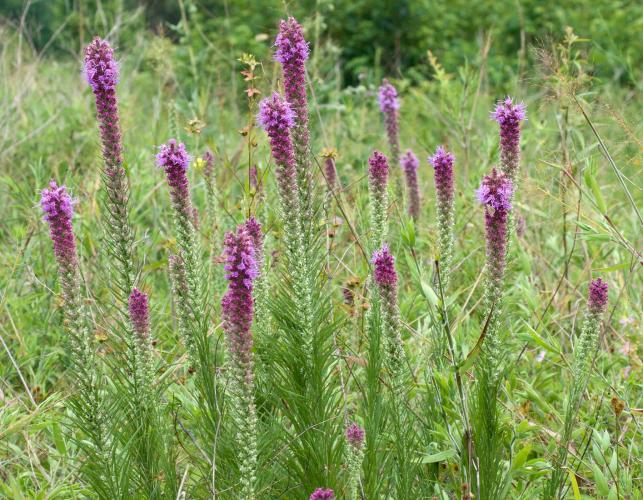

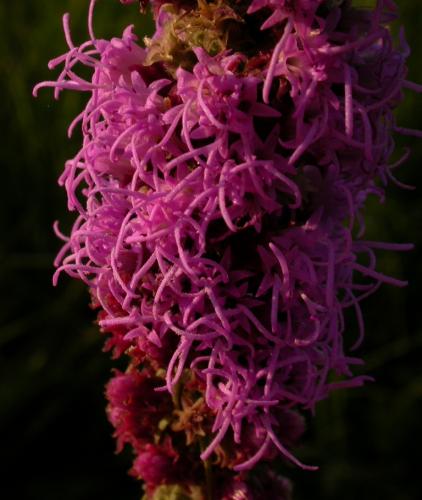








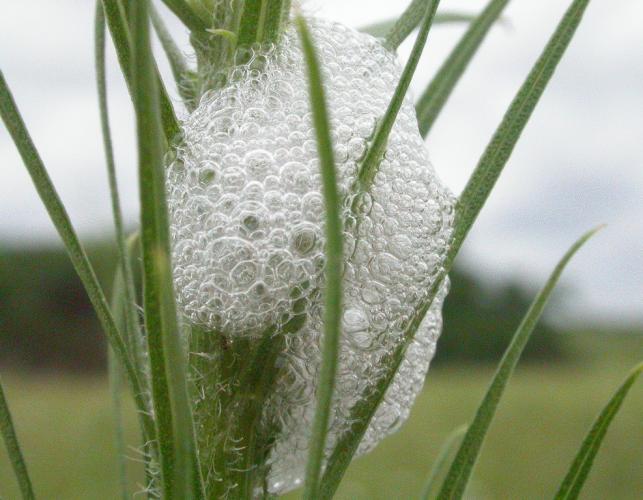
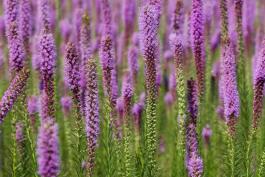

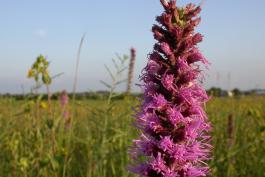
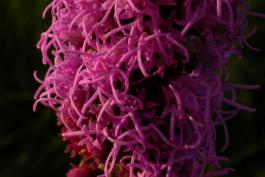





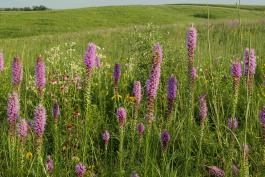



Where to See Species
Lead Mine Conservation Area is located in northeastern Dallas County, 40 miles south of Lake of the Ozarks, 12 miles north of Bennett Springs, five miles east of Tunas, and 21 miles northeast of Bu






















